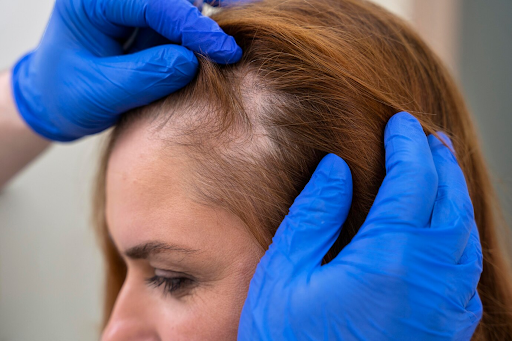Hair loss can be a distressing experience for both men and women, affecting confidence and self-image. For those dealing with thinning hair or bald patches, hair transplant surgery has become a trusted option to restore hair density and achieve a natural-looking hairline. If you’re exploring options at a hair replacement clinic or considering a hair transplant in Raleigh, this guide will help you understand how the procedure works and what to expect in terms of outcomes.
Understanding Hair Transplant Surgery
Hair transplant surgery involves moving healthy hair follicles from one part of the scalp (usually the back or sides) to areas affected by hair thinning or baldness. It’s designed to restore hair growth in a way that looks natural and lasts for years.
Types of Hair Transplant Techniques
There are two main methods used in modern hair transplantation:
Follicular Unit Transplantation (FUT)
Also known as the “strip method,” FUT involves removing a small strip of scalp from the donor area. Hair follicles are then extracted from this strip and transplanted into the balding areas. This technique may be more suitable for patients needing a larger number of grafts.
Follicular Unit Extraction (FUE)
FUE is a less invasive technique where individual hair follicles are harvested directly from the donor area and transplanted into the recipient sites. This method leaves minimal scarring and generally has a shorter recovery time. Many patients prefer FUE for its precision and natural-looking results.
Why Hair Density Matters
Hair density refers to the number of hair strands per square centimetre on the scalp. When someone experiences hair loss, it’s often the reduction in density that becomes noticeable. A successful hair transplant aims to restore this density in a way that blends seamlessly with the surrounding hair.
Improving Appearance and Confidence
Restoring hair density isn’t just about aesthetics—it can significantly impact a person’s self-esteem. A fuller head of hair often makes individuals look younger and feel more confident in social and professional settings.
The Procedure: What to Expect
If you’re visiting a hair replacement clinic or scheduling a hair transplant in Raleigh, here’s what the process typically involves:
Initial Consultation
Your journey begins with a consultation where the surgeon assesses your scalp, discusses your medical history, and determines your suitability for a transplant. The consultation is also the time to outline your goals and expectations.
Planning the Transplant
The surgeon will design a hairline that complements your facial features and marks the areas that need density restoration. The number of grafts required is calculated based on the degree of hair loss and the quality of the donor area.
The Surgery Day
The procedure usually takes 4 to 8 hours, depending on the number of grafts. You’ll be given local anaesthesia to ensure comfort throughout. The chosen technique (FUE or FUT) is then performed, and the follicles are carefully implanted into the recipient sites.
Post-Operative Care
After surgery, you may experience minor swelling or discomfort, which subsides within a few days. The clinic will provide detailed aftercare instructions, including how to wash your hair, medications to use, and what to avoid during the recovery period.
Read Also : Who Is Calling Me From +023?
Hair Growth Timeline After Surgery
Hair growth after transplant surgery is gradual, and it’s important to manage expectations realistically. Here’s a rough timeline of what you can expect:
First Month
The transplanted hair may fall out within the first few weeks, a normal phase known as “shock loss.” This makes way for new hair to grow from the transplanted follicles.
Three to Four Months
You’ll start to see new hair sprouting. Initially, this hair may appear thin and soft, but it gradually becomes thicker over time.
Six Months
By the six-month mark, the improvements in hair density become more noticeable. Hair begins to take on a more natural texture and blends with the existing strands.
Twelve Months
Most patients see their final results around the one-year point. The transplanted hair grows just like natural hair—able to be cut, styled, and washed as usual.
What Affects the Final Outcome?
Several factors can influence the success and final look of your hair transplant:
Skill of the Surgeon
The expertise of the surgeon is one of the most crucial elements. Choosing an experienced team at a reputable hair replacement clinic increases the likelihood of achieving high-density, natural-looking results.
Donor Hair Quality
The density and strength of the hair in your donor area directly impact how much coverage you can achieve. Those with thick, healthy donor hair tend to see better results.
Post-Surgical Care
Following aftercare instructions carefully supports the healing process and encourages successful graft survival.
Overall Health
Your general health, age, and lifestyle habits can influence healing and hair regrowth. Smoking, for instance, can impair circulation and affect the transplant outcome.
Is a Hair Transplant Right for You?
Hair transplant surgery is suitable for many people, but it may not be the best solution for everyone. You might be a good candidate if:
- You have noticeable hair thinning or bald patches
- Your hair loss has stabilised
- You have sufficient donor hair
- You’re in good overall health
For those unsure whether they’re ready for surgery, non-surgical options may be available through a hair replacement clinic. These can include topical treatments, PRP (platelet-rich plasma), or laser therapy to improve scalp health and encourage hair growth.
Conclusion
A hair transplant in Raleigh offers a long-term solution for hair thinning and baldness by restoring hair density with natural-looking results. Whether you opt for FUE or FUT, modern techniques make the process more comfortable and effective than ever before.
Consulting with an experienced hair replacement clinic can help you determine the right approach for your needs. With the right care, patience, and expectations, you can enjoy a fuller head of hair and a boost in confidence that lasts for years to come.







